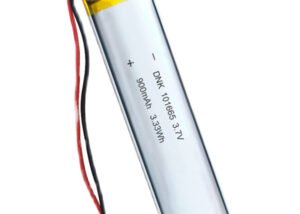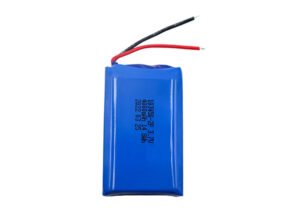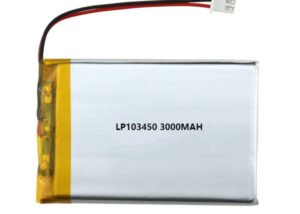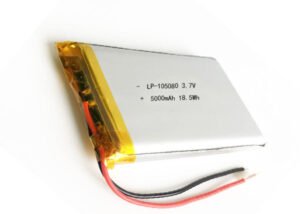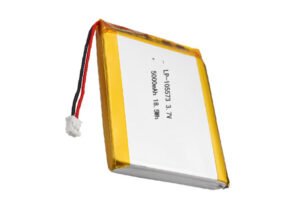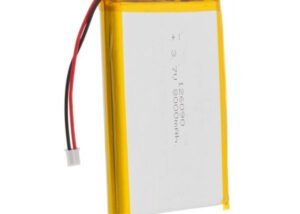LiPO Battery in Calculator
Calculators have been an essential tool for mathematicians, students, and professionals for decades. These devices have undergone several changes, from the earliest mechanical calculators to the latest scientific calculators. One significant change in the calculator industry has been the introduction of rechargeable batteries. Batteries have improved the functionality of calculators, making them more efficient and convenient to use. This post will focus on Lithium Polymer (LiPO) batteries, their features, benefits, and maintenance in calculators.
What is LiPO battery?
A. Definition
Lithium Polymer (LiPO) battery is a rechargeable battery that uses lithium-ion technology. It is a lightweight battery that has a high energy density and can store more power than other types of batteries. LiPO batteries are commonly used in electronic devices such as smartphones, laptops, and calculators.
B. Features
LiPO batteries have several features that make them unique. First, they have a high energy density, which means they can store more power in a small space. Second, they have a low self-discharge rate, meaning they can retain their charge for a more extended period. Third, they have a flat discharge curve, which means they can deliver power consistently until they are depleted. Lastly, LiPO batteries are lightweight, making them ideal for portable devices.
C. Advantages
LiPO batteries have several advantages over other types of batteries. First, they are more energy-efficient, meaning they can deliver more power from the same amount of charge. Second, they have a longer lifespan, meaning they can last longer before needing replacement. Third, they are lightweight, making them suitable for portable devices. Lastly, LiPO batteries can be charged quickly, reducing the time needed to charge the battery fully.
LiPO battery in calculator
A. Types of calculators that use LiPO battery
Several types of calculators use LiPO batteries. These include scientific calculators, graphing calculators, and financial calculators. These calculators require a reliable power source to perform their functions efficiently.
B. Benefits of using LiPO battery in calculators
Using LiPO batteries in calculators has several benefits. First, LiPO batteries have a high energy density, meaning they can store more power than other types of batteries. This allows the calculator to last longer before needing a recharge. Second, LiPO batteries have a flat discharge curve, meaning they can deliver power consistently until they are depleted. This ensures that the calculator can perform its functions efficiently until the battery is drained. Third, LiPO batteries have a low self-discharge rate, meaning they can retain their charge for a more extended period. This is beneficial for users who may not use their calculator regularly. Fourth, LiPO batteries can be charged quickly, reducing the time needed to charge the battery fully. This is beneficial for users who need their calculator to be ready quickly.
C. How LiPO battery enhances the performance of calculators
LiPO batteries enhance the performance of calculators in several ways. First, they provide a reliable power source that allows the calculator to function efficiently. Second, LiPO batteries have a high energy density, meaning they can store more power than other types of batteries. This allows the calculator to perform more functions before needing a recharge. Third, LiPO batteries have a low self-discharge rate, meaning they can retain their charge for a more extended period. This ensures that the calculator is always ready to use when needed. Fourth, LiPO batteries can be charged quickly, reducing the time needed to charge the battery fully. This ensures that the calculator is always ready when needed.
Maintenance of LiPO battery in calculators
A. Tips for extending the life of LiPO battery in calculators
Several tips can be used to extend the life of LiPO batteries in calculators. First, the battery should be charged regularly, even if it is not in use. This ensures that the battery retains its charge capacity. Second, the battery should be stored in a cool and dry place. Exposure to high temperatures can reduce the lifespan of the battery. Third, the battery should be charged using the correct charger. Using the wrong charger can damage the battery or reduce its lifespan. Fourth, the battery should be charged to the recommended voltage. Overcharging can damage the battery or reduce its lifespan.
B. Precautions when handling LiPO battery in calculators
Several precautions should be taken when handling LiPO batteries in calculators. First, the battery should not be punctured or damaged. This can cause the battery to leak or explode. Second, the battery should not be exposed to high temperatures or direct sunlight. This can reduce the lifespan of the battery. Third, the battery should not be charged using the wrong charger. This can damage the battery or reduce its lifespan. Fourth, the battery should be stored in a cool and dry place. Exposure to high temperatures can reduce the lifespan of the battery.
LiPO batteries have become an essential component in calculators. They provide a reliable power source that allows the calculator to function efficiently. They have a high energy density, a low self-discharge rate, and a flat discharge curve, making them ideal for portable devices like calculators.
The future of LiPO batteries in calculators looks promising. As technology advances, LiPO batteries will become more energy-efficient and have a longer lifespan. This will further enhance the performance of calculators, making them more efficient and convenient to use.


